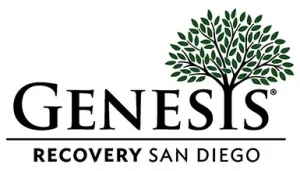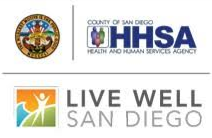Since the 1990s, opioid use has skyrocketed across America, leading to a national crisis. In fact, every day, approximately 128 people in the United States die from an opioid overdose. In California, the number of opioid overdose deaths has increased by 9 percent since 2015. In 2018, 45 percent of overdose deaths in the state involved an opioid, and 250 people in San Diego County died from opioid-related causes.
The COVID-19 pandemic has made California’s drug overdose situation worse, particularly in San Diego. “In some of our counties,” Attorney General Xavier Becerra says, “there are more deaths from overdoses than there are from COVID-19.” San Diego has seen a 50 percent increase in overdose deaths in July and August of 2020 compared to a couple of months before the pandemic began. Luckily, San Diego has several programs in place to help combat the city’s opioid crisis.
What Are Opioids?
Opioids are a specific group of drugs that help ease, reduce, and relieve pain. Opioids either come from the opium poppy plant or are manufactured using a similar chemical structure. Even though opioids typically originate from a natural source, the drugs can be highly addictive, and misusing them can cause significant damage to the brain and body. Opioids fall into two main categories: medications prescribed by doctors, also called “painkillers,” and illegal opioids, also called “street drugs.”
Some of the most commonly used opioids include:
- Oxycodone, sold under brand names OxyContin, Percocet, and Xartemis XR
- Hydrocodone, sold under brand name Vicodin
- Morphine, sold under brand names MS Contin, Arymo, Astramorph-PF, Infumorph, and Duramorph
- Fentanyl, a synthetic opioid that’s 50 to 100 times more potent than morphine
- Methadone, sold under brand names Diskets, Methadose, and Dolophine
- Codeine, which is often prescribed to treat pain and reduce coughing
- Heroin, an illegal “street drug”
How is San Diego Responding to the Opioid Crisis?
In 2019, opioids were the leading cause of overdose deaths in San Diego County. Fortunately, the county’s Health and Human Services Agency has responded to the city’s opioid problem by implementing Live Well San Diego, The San Diego Opioid Project, and other local initiatives. Let’s take a look at each in more detail.
Live Well San Diego
In 2010, San Diego County had an increasing number of citizens with chronic illnesses and substance use disorders. In response to that concern, the San Diego County Board of Supervisors adopted the “Live Well San Diego” vision plan. The plan focuses on:
- Improving the health of San Diego residents and supporting healthy choices.
- Ensuring that residents are protected from crime and abuse and that neighborhoods are safe and resilient during disasters and emergencies.
- Cultivating opportunities for San Diego residents and communities to grow, connect, and enjoy high-quality life.
Live Well San Diego doesn’t directly address opioid use, but it does work to improve living conditions that can lead to opioid addiction, as well as enhancing health care systems that assist people experiencing an overdose or opioid-related health problems.
Since adopting Live Well San Diego, the California Prescription Opioid Misuse & Overdose Prevention Workgroup has worked with the California Healthcare Foundation to establish the Opioid Safety Coalition in Network in San Diego.
The San Diego Opioid Project
The San Diego Opioid Project is a new digital outreach campaign launched by the District Attorney’s Office and the county’s Health and Human Services Agency. Using platforms like Instagram, Facebook, and YouTube, the campaign hopes to target vulnerable communities and young people to dispel myths about opioid use while providing people help finding local resources for treatment.
This past September, the San Diego Opioid Project hosted a virtual town hall meeting. The meeting, which was accessible via Zoom and free to attend, provided attendees a crash course on what makes opioids so dangerous, the risks of misuse, and resources available to those at risk of addiction.
Controlled Substance Utilization Review and Evaluation System (CURES)
The Controlled Substance Utilization Review and Evaluation System (CURES) focuses on the medical side of the opioid crisis. CURES, use of which is now required by law, is a database in which California physicians can look at a patient’s controlled substance use history. Essentially, the database system helps California doctors identify situations that may indicate or signal prescription drug abuse. In addition to that, California doctors must now:
- Obtain and use tamper-resistant prescription forms for prescription drugs categorized as a Schedule II through V. These prescription forms can only be ordered from state-approved security printers.
- Report lost or stolen prescription forms to local law enforcement and the Prescription Drug Monitoring Program. Doctors can report lost or stolen prescription forms to law enforcement officers electronically when logged into their CURES account.
San Diego County Prescription Drug Abuse Task Force
The San Diego County Prescription Drug Abuse Task Force works to address prescription drug abuse in San Diego County. The task force works with the San Diego County Sheriff’s Department to reduce access to prescription drugs. The multi-agency task force has two main objectives which include:
- Decreasing prescription drug abuse and access by promoting safe storage, disposal, and prescribing practices.
- Promoting and encouraging behavior change by positively engaging individuals in need of treatment and ensuring they receive the treatment they need.
Hope2Gether Foundation
After almost losing her son Aaron to an opioid overdose, Sherrie Rubin founded The Hope2Gether Foundation. The organization’s mission is to reduce and prevent prescription drug and heroin overdoses and deaths. The San Diego-based foundation works to help combat the city’s opioid crisis by:
- Educating the public. To help educate others about the dangers of opioid use, Sherrie visits San Diego elementary, middle, and high schools with her son Aaron. During their visits, she tells students how Aaron was in a coma for 3 ½ weeks after overdosing on OxyContin. Students are also able to see that even though Aaron lived, he did not come out of the situation unscathed as he is now a quadriplegic that needs 24-hour care. Aaron then shares his story with students and encourages them to stay away from drugs, a choice he wishes he had made.
- Preventing overdose. In addition to educating students, Sherrie speaks at conventions around the nation about the importance of preventing drug overdoses.
- Collaborating with community leaders. The Hope2gether Foundation works with various entities and community leaders such as the U.S. Attorney’s Office, the Drug Enforcement Agency, and the San Diego Sheriff’s Department to combat the opioid crisis.
- Advocating for change. Sherrie has also shared Aaron’s story at the California state capital. There, she advocated for key policy changes involving opioids prescribed by California doctors. In fact, Sherrie’s work through The Hope2gether Foundation helped pass legislation that makes it mandatory for doctors to use the Controlled Substance Utilization Review and Evaluation System (CURES) database before prescribing opioids.
San Diego’s Pain Coalition
Led by doctors at San Diego’s Sharp Rees-Stealy Medical Centers, the committee aims to:
- Reduce inappropriate use of opioids by 10 percent
- Reduce the overall total opioid dosage in the county
- Prevent overdose
- Increase the use of naloxone, a rescue drug that immediately reverses opioid overdoses
- Expand the use of holistic pain management
To accomplish this mission, the committee has launched a multi-level strategy that includes:
- Educating prescribers and patients about the dangers of opioid use
- Safely tapering patients off opioids when pain symptoms didn’t improve
- Teaching doctors how to use the morphine milligram equivalent calculation created by the CDC in order to watch dosage levels and prevent the risk of overdose
- Embedding an assessment tool in patients’ electronic health records that references personal and family history of drug and alcohol abuse
- Encouraging doctors to attend the Sharp Rees-Stealy Medical Center’s pain management program. The 6-week course helps patients decrease opioid use while learning to tackle their pain with meditation, guided imagery, stretching, and other stress-reducing techniques.
How We Treat Opioid Addiction
Here at Genesis Recovery, we’re proud to call San Diego home and join the city’s efforts in curtailing the opioid crisis. We offer programs specifically designed to treat prescription drug and opioid addiction. Our approach to treatment includes clinical support, the 12-step program, soul-nurturing activities, and lifestyle practices, as well as a supportive sober community.
Opioid addiction doesn’t have to continue to control your life. Long-term recovery is possible and we can help you get there. Contact us today at 619-797-7319 if you or a loved one have opioid addiction challenges.


